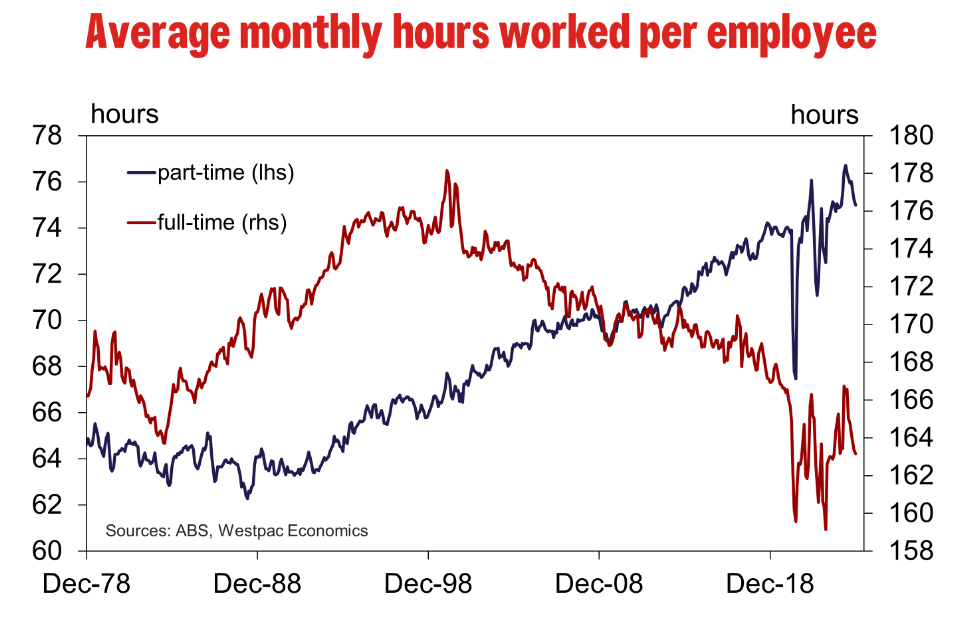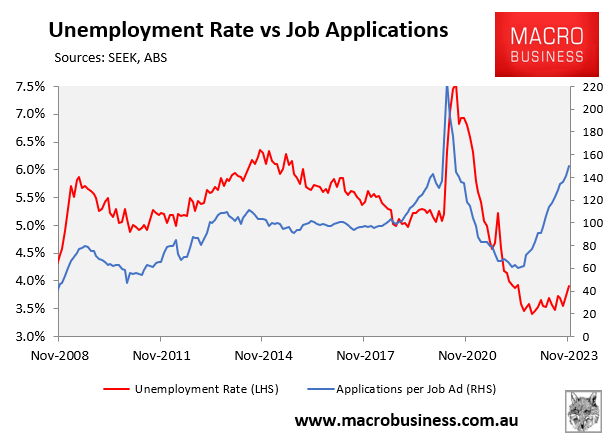A snippet from Westpac shows how weak the Labour market really is:
As the supply side of the economy continues to adjust from the COVID-19 shock and demand slows on the back of tighter macroeconomic policy, employers are likely to pull back on demand for labour.
Given how tight the labour market has been during this cycle, employers are understandably wary of letting people go.
Instead, they are likely to make this adjustment through demanding fewer hours of their employees.

I have noted many times over the years that the Australian labour market in weakness has more in common with German notions of “kurzarbeit” than it does with American headcount cuts.
I largely put this down to a stronger social conscience in Australia than in America. Even though it does not go so far as to formalise the arrangements as Germany, where unions and employers formerly agree to cut hours instead of heads.
Basically, locals typically don’t like to sack people and that has led to labour adjustment process that offers the best of both worlds.
The flexibility to cut hours over heads without the inflexible structure of Germany.
It’s probably one of the few areas of the economy where mateship exerts a positive influence.
However, what this also means is that the true extent of labour market weakness can be disguised by headline numbers.
Which is partly how we end up with a chart like this:

Aussie kurzarbeit will delay the rise in the unemployment rate, but it won’t prevent it.

